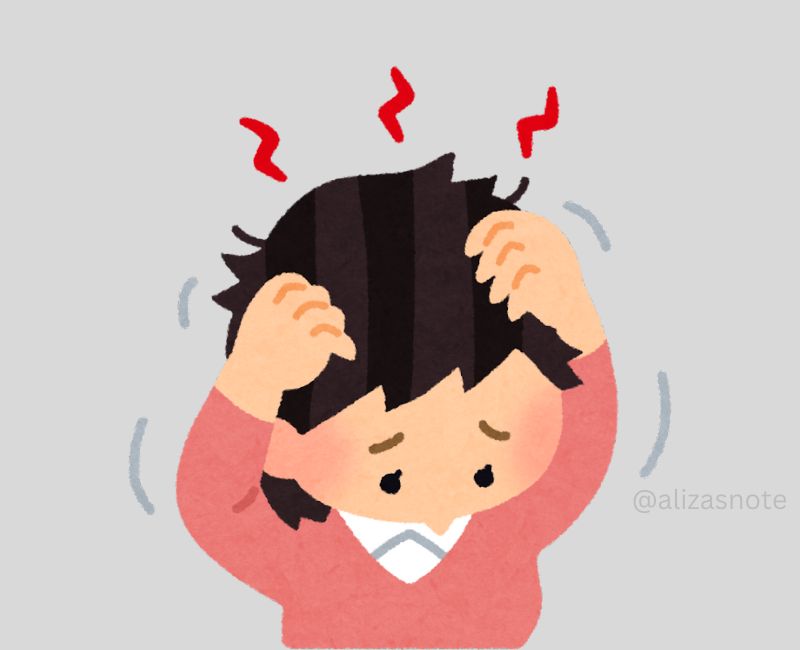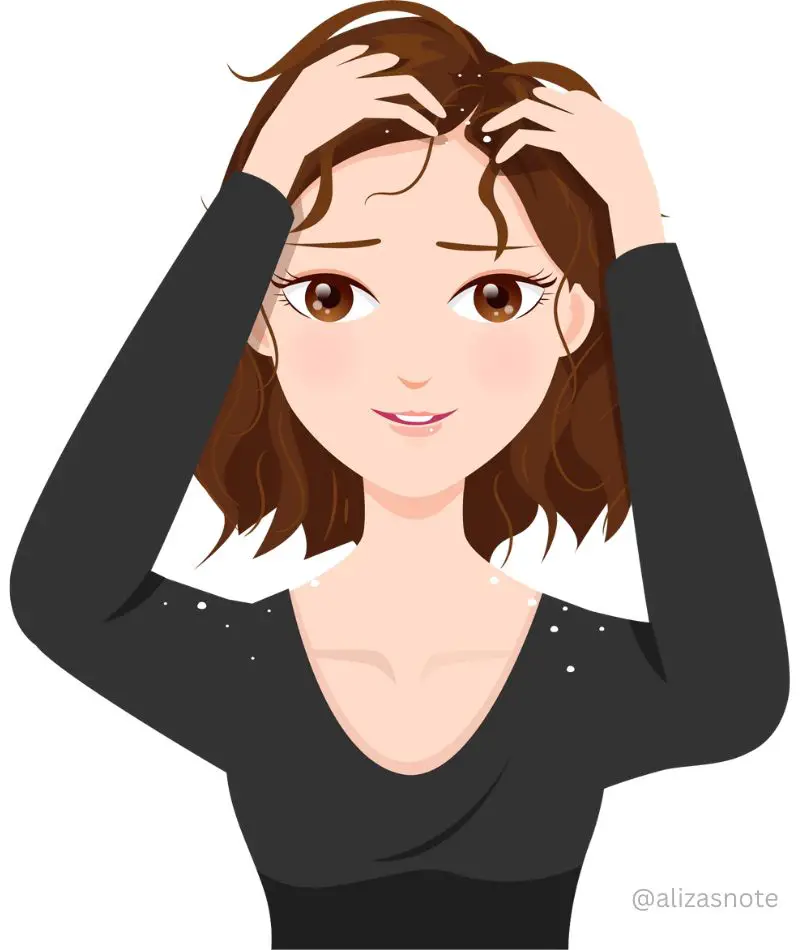When dandruff appears on kids scalp, it can be both perplexing and distressing. Contrary to common belief, dandruff isn’t exclusive to adults; it can affect children too, causing discomfort and self-consciousness.
If you’ve noticed those telltale white flakes on your child’s shoulders or witnessed them scratching their head more frequently, don’t panic – solutions abound, even; dandruff itself isn’t harmful, addressing it promptly can prevent discomfort and potential scalp complications.
Find below what to do when child has dandruff and meet a healthier scalp for your child.
Causes of Dandruff in Children:
Dandruff can be a persistent concern for parents, but understanding its underlying causes is essential for effective management. Here are several common factors to lead dandruff in children:
1. Dry Scalp
-
- A primary cause of dandruff in children is a dry scalp, often triggered by factors like cold weather, low humidity, or excessive use of harsh shampoos.
- When the scalp lacks moisture, it can become flaky and irritated, leading to the formation of dandruff flakes.
2. Sensitivity to Hair Products
-
- Children’s scalps may be sensitive to certain ingredients commonly found in hair care products, such as sulfates, fragrances, and preservatives.
- These ingredients can cause scalp irritation and inflammation, contributing to the development of dandruff.
3. Fungal Infections
-
- Fungal infections, particularly seborrheic dermatitis, are a common cause of dandruff in children.
- Seborrheic dermatitis manifests as red, itchy, and flaky patches on the scalp and other oily areas of the skin, caused by an overgrowth of the fungus Malassezia.
4. Hormonal Changes
-
- Hormonal fluctuations, especially during puberty, can disrupt the balance of oils on the scalp, leading to dandruff.
- Increased sebum production due to hormonal changes creates an environment conducive to the growth of dandruff-causing fungi.
5. Poor Hygiene
-
- Inadequate scalp hygiene, such as infrequent washing or improper rinsing of hair, can contribute to dandruff.
- Children who sweat heavily or are exposed to dirt and pollutants without proper cleansing practices may be more susceptible to dandruff.
Understanding these common causes of dandruff in children empowers parents to take proactive steps in addressing the issue.
What to do when child has dandruff:
Addressing Dandruff in Children: Practical Solutions for Parents
Addressing dandruff on your child’s scalp can be alarming, but there are effective measures you can take to manage this common issue:
1. Gentle Hair Care Regimen
-
- Opt for mild, child-friendly shampoos that are gentle on the scalp. Look for products specifically formulated for children or those labeled as moisturizing.
- Avoid overwashing your child’s hair, as frequent washing can strip away natural oils and worsen dryness.
- Use lukewarm water for hair washing, as hot water can further dehydrate the scalp.
2. Choose Anti-Dandruff Shampoos
-
- Consider using over-the-counter anti-dandruff shampoos designed for children. Look for key ingredients like zinc pyrithione, selenium sulfide, or ketoconazole, known for their dandruff-fighting properties.
- Follow the usage instructions on the shampoo bottle diligently, typically applying 2-3 times per week for optimal results.
3. Hydrate the Scalp
-
- For dry scalp, apply natural oils such as coconut oil or olive oil to moisturize the scalp.
- Massage a small amount of oil onto the scalp, focusing on areas with visible dandruff flakes. Leave it on for a few hours or overnight before rinsing with shampoo.
4. Promote Good Hygiene
-
- Discourage your child from scratching their scalp, as it can worsen irritation and lead to more flaking.
- Teach proper hair care habits, including using a wide-tooth comb for gentle detangling and avoiding sharing combs or hats to prevent the spread of dandruff-causing fungi.
5. Monitor and Adjust
-
- Keep a close watch on your child’s scalp condition and adjust your treatment approach accordingly. If there’s no improvement after a few weeks of using anti-dandruff shampoos, consider seeking advice from a pediatrician.
Maintaining a consistent hair care routine, you can effectively manage your child’s dandruff symptoms and promote scalp health.
Natural Remedies and Home Care Tips:
When addressing dandruff in children, natural remedies and home care tips offer gentle yet effective solutions. Here are safe and practical strategies to promote scalp health in kids:
1. Coconut Oil
-
- Renowned for its moisturizing properties, coconut oil can hydrate and nourish dry skin, reducing flakiness and itching.
- Gently massage a small amount onto your child’s scalp, concentrating on areas with dandruff flakes. Leave it on for several hours or overnight before washing with a gentle shampoo.
2. Tea Tree Oil
-
- With antimicrobial and anti-inflammatory properties, tea tree oil is effective in treating dandruff and scalp irritation.
- Dilute a few drops in a carrier oil like coconut or olive oil, then massage it gently into the scalp. Leave for at least 10 minutes then rinsing thoroughly.
3. Aloe Vera
-
- Soothing and hydrating, aloe vera gel can calm scalp irritation and reduce dandruff flakes.
- Apply freshly extracted gel directly to the scalp, leaving it on for 30 minutes to an hour before rinsing with lukewarm water.
4. Apple Cider Vinegar
-
- Restoring scalp pH balance and inhibiting dandruff-causing fungi, apple cider vinegar is a helpful remedy.
- Mix equal parts water and vinegar for a final rinse post-shampoo. Dilution is essential to prevent irritation.
5. Maintain a Healthy Diet
-
- Encourage a balanced diet rich in vitamins, minerals, and omega-3 fatty acids found in fruits, vegetables, whole grains, fish, nuts, and seeds to support scalp health and reduce inflammation.
6. Regular Hair Washing
-
- Ensure your child washes their hair regularly with a gentle shampoo to remove excess oil, dirt, and dead skin cells.
- Opt for lukewarm water to prevent stripping the scalp of its natural oils.
7. Stress Management
-
- Help your child manage stress through relaxation techniques like deep breathing and mindfulness, as stress can exacerbate dandruff symptoms.
Home care tips into your child’s routine can effectively manage dandruff and promote a healthier scalp without resorting to harsh chemicals.
Read Next: Home Remedies For Dandruff
Lifestyle Adjustments:
Lifestyle adjustments play a crucial role in effectively managing dandruff in children. Here are practical changes you can make to promote scalp health:
- Encourage Nutritious Eating
Promote a balanced diet rich in vitamins, minerals, and healthy fats to support scalp health. Encourage your child to consume plenty of fruits, vegetables, whole grains, and lean proteins.
- Ensure Hydration
Adequate hydration is key for maintaining scalp moisture. Encourage your child to drink water regularly throughout the day to keep their scalp hydrated from within.
- Stress Management
Teach stress-reducing techniques such as deep breathing or mindfulness to help your child manage stress levels. Stress can worsen dandruff symptoms, so promoting relaxation is important.
- Minimize Triggers
Identify and minimize exposure to potential triggers like harsh hair care products or environmental irritants. Choose gentle, hypoallergenic hair products suitable for children to avoid scalp irritation.
- Maintain Good Hygiene
Emphasize regular bathing and hair washing with gentle shampoos. Teach proper hair care practices, including thorough rinsing and gentle detangling with a wide-tooth comb.
- Environmental Protection
Protect your child’s scalp from harsh weather conditions by dressing appropriately for cold, windy, or sunny weather. Use hats or sunscreen to shield the scalp from UV rays.
If dandruff persists despite these changes or worsens, consult a pediatrician or dermatologist for further evaluation and treatment.
FAQ
Q. What to do when baby has dry scalp?
Dry scalp is a common concern in babies, but there are steps you can take to alleviate it:
- Gently massage the baby’s scalp with natural oils like coconut, olive, or almond oil to moisturize and reduce dryness.
- Use a mild, hypoallergenic baby shampoo to wash their hair, avoiding harsh chemicals or fragrances.
- Limit bath time and use lukewarm water to prevent stripping the scalp’s natural oils.
- Ensure hydrated your kids by offering plenty of water.
Q. What to put on baby’s dry scalp?
Opt for gentle and natural remedies when treating your baby’s dry scalp:
- Coconut oil: Apply a small amount and massage it into the scalp to soothe dryness and irritation.
- Aloe vera gel: Its anti-inflammatory properties can hydrate and calm dry skin when applied directly.
- Oatmeal bath: Adding colloidal oatmeal to bathwater can relieve dryness and restore the skin’s barrier function.
- Humidifier: Using one in your baby’s room adds moisture to the air, preventing dryness, especially in winter.
Q, How often should I bathe my baby?
Answer: Bathing frequency depends on factors like age, skin sensitivity, and climate:
- Newborns: A sponge bath 2-3 times a week is sufficient.
- Older babies: Increase to 3-4 times a week as they become more active.
- Dry or sensitive skin: Bathe 2-3 times a week with gentle, moisturizing products to avoid drying out the skin.
Q. How can I prevent diaper rash in my baby?
Answer: Prevent diaper rash with these steps:
- Change diapers frequently to minimize contact with moisture and irritants.
- Use a barrier cream with zinc oxide to protect the skin.
- Let the skin air dry completely before putting on a fresh diaper.
- Choose breathable diapers to reduce moisture buildup.
- Give diaper-free time daily to let the skin breathe and recover.
Take Away:
- Lifestyle adjustments such as promoting nutritious eating habits, stress management, and minimizing potential triggers may helpful.
- Keep in mind that every child is unique, and experimentation may be necessary to find what works best for your little one. Should dandruff persist or worsen despite your efforts, seeking advice from a pediatrician or dermatologist is advisable.
- Your child’s comfort and confidence are paramount, and with dedication and perseverance, you can support them in achieving a scalp that’s free from dandruff.
- Together, let’s ensure our children enjoy healthy, dandruff-free scalps.
- We invite you to share your experiences and additional tips in the comments section below and join us on Pinterest for further parenting inspiration and advice!


